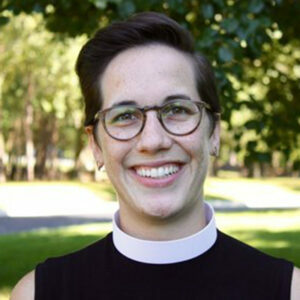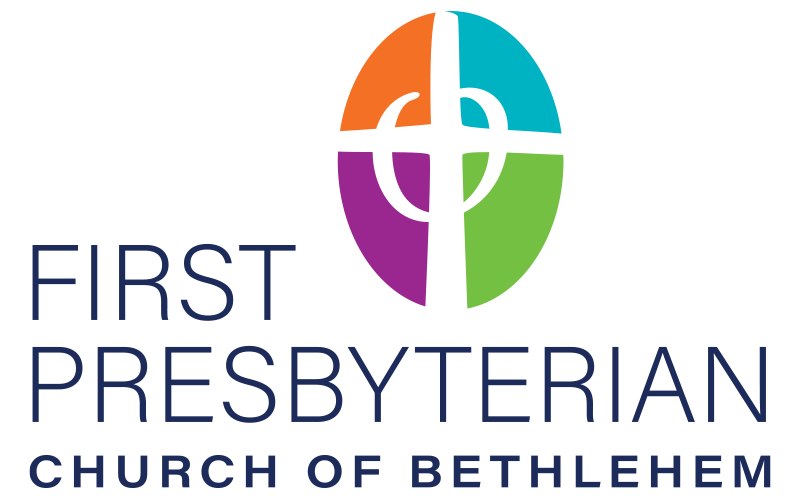By The Rev. Lindsey Altvater Clifton
The first time I preached this Gospel text was as an assignment for my preaching class. Twice during the course, we drew slips of paper out of a bright red plastic fire fighter’s hat…you know, the kind for children to play with. Those slips of paper in the “fire hat,” as our professor called it, held our preaching fate and assigned us the lectionary Scripture that we’d use for our graded sermons in class. After my first go ‘round to select a New Testament text, I carefully unfolded the slip of paper, hoping and praying it might be something I could work with. The text was John 3:14-21…and after a few moments of pondering, I realized that smack dab in the middle of this innocent sounding group of verses was John 3:16…THE John 3:16.
Needless to say, somewhere along the way, I couldn’t help  but think: “Good Lord…of all the texts and all verses in the entire New Testament, that’s the one I’ve got to work with?!” And here I am again, waist deep in Lent and waist deep in all the baggage that goes with John 3:16. Some folks love it, others are ambivalent about it, and still others have been painfully bludgeoned by it.
but think: “Good Lord…of all the texts and all verses in the entire New Testament, that’s the one I’ve got to work with?!” And here I am again, waist deep in Lent and waist deep in all the baggage that goes with John 3:16. Some folks love it, others are ambivalent about it, and still others have been painfully bludgeoned by it.
As you can imagine, it’s a source of some wrestling for me and for many preachers as we come face to face with deep uncertainties about preaching on passages that we don’t have all figured out or would really prefer to avoid in an effort not to ruffle the theological feathers of all our congregation members at once.
But the more time I’ve spent with this passage, I’ve begun to think John 3:16 is in peril of losing its voice of promise: too often, rather than being a claim of assurance, this verse is used as an injunction for judgment. Rather than being a statement about God’s love for the world, it’s used a threat for those “unwilling” to accept God’s love. Rather than being heard as an invitation to participate in sharing God’s love, it’s used a means of excluding those we think God does not love.
While “John 3:14-21” isn’t likely to be tattooed on anyone’s bicep, painted on an endzone sign, or screen printed on t-shirts anytime soon, it has become clear to me that people of faith must keep reading before and beyond John 3:16 with attentiveness and care for the nuance that we find. And such a task seems particularly appropriate during Lent, really. We spend these 40 days asking what shape our faith takes as we try again and again to follow Jesus’ strange, often challenging path. So with a Lenten seeker’s eyes, we must dive in and begin by relocating this passage in its context.
Written for an audience of folks who lived in the Roman Empire and already knew the stories of Jesus, John is the last-written of the Gospel accounts. With sophistication, craft, and artful persuasion, the author both tells and interprets the gospel story for the spiritual formation of these believers. At the time, this minority group was seeking to define itself not only within the diversity of Judaism but also among the varied followers of Jesus (M. Salmon).
“In reality,…[John’s small] community did not have the power or influence to marginalize others or cause harm by excluding those who did not conform” (M. Salmon). As a result, throughout this Gospel passage, we encounter many powerful contrasting images and ideas; these stark pairings can be understood as one of the author’s tools to affirm the community of believers who likely made difficult choices in order to belong.
Today’s reading captures the end of the story of Jesus’ response to Nicodemus, a Jewish community leader who seems to be grappling with such a choice himself. Seeking understanding, Nicodemus comes to Jesus at night, looking for the man he identifies as “a teacher who has come from God.” Nicodemus asks a few questions of Jesus, whose singular responses to the one man become a plural public message to the whole audience of readers just before our passage begins—this is a revelation for everyone.
Notice [that] John does not say, “For God so loved Nicodemus. Nor does it say, “For God so loved the nation of Israel, or people who do what God says.” No. It says, “For God so loved the world.” The cosmos, the universe, the creation, everything and everyone. As one preacher writes, “This is not an individual, one-by-one rescue mission. This is a revolution, an action that turns the world around and points it in a new direction.”
Too often the narrative we get from this text comes with a heaping helping of judgment and condemnation and sounds more like an ultimatum or the Jonathan Edward’s sermon “Sinners in the Hands of an Angry God” than the deep and abiding truth that’s really here—God loves us first. Growing up, especially in the Bible-belt South, no one ever read or preached John 3:17—“Indeed, God did not send the Son into the world to condemn the world, but in order that the world might be saved through him.”
They must’ve missed that verse. But the shape of God’s love and our response isn’t a coerced profession of faith or a fear-mongered manipulation for acceptance. It’s relationship and a promise—in love, God gives God’s very breath and image to the dust of the earth as we are formed; in love, God takes on flesh and reveals Godself to us in Jesus; in love, Jesus knows a community of family and friends who both nurture him and betray him; in love, Christ experiences the very depths of our human pain and suffering so that we might not experience it alone. For this! For us! For all of us! That’s John 3:16. For God so loved the world! Again and again, God loves us first.
And we, too, are called to such relationship; we are called to receive the unconditional love of God, the grace of Christ, and the companionship of the Holy Spirit so that we might share them with others, so that we might draw near to the world with the Good News that the world is not condemned, but rather saved by God’s love.
Our belief in that fundamental truth isn’t about “getting saved” or “accepting Jesus Christ as our personal lord and savior.” It isn’t something cognitive or logical, like believing that 2+2=4 or the water is made up of 2 atoms of hydrogren and 1 atom of oxygen. In fact, the Greek root for “belief” is never used as a noun in John’s Gospel. Rather, it is always a verb, an action, something that we do and it’s rooted in relationship—something more like “to trust” or “to rely upon.” At its best, this verb-type of belief shapes the way we exist in the world. Even if we never have all the facts straight or don’t have all our theological ducks in a row or seem to carry more questions than answers, we can still live out this active, relational response to God’s love for the world made known in Jesus.
As one preacher writes, “All too often, we turn this belief, this trust, this reliance into an ‘if/then’ proposition. We say, ‘If you obey God, then God will love you.’ ‘If you give tithes and offerings, then God will bless you.’ ‘If you accept Jesus, then God will save you.’ But that’s backwards. The story of God contained in the Bible, from Genesis to Revelation, is that God has acted first to [love] us, and afterwards we respond to having been [loved]. It’s a ‘because/therefore’ equation.”
Because God loves us first, and shows us that again and again, therefore, we love ourselves, creation, and others in grateful response. We take up our relational verb-belief; we rely upon, we trust in Jesus, and we respond to God with faith-action of our own, being made alive in Christ, trusting Christ’s love and presence in our lives. Because God acts first, therefore we respond in love with movement and motion.
For Phyllis and Ginny and Jane and Donna so love the world, that they feed people and build fellowship and connection every chance they can. For Deb and Melody and Rich and Dan and Donna and Pam and Judy so love the world that they drive Afghan friends to doctor’s appointments and the grocery store, wash their clothes, teach them English, and love their children. For Cindy and JoAnne so love the world that they shape young faiths to help them flourish. For Dave and our choir members so love the world that they lead us to experience the Spirit in song. For Steve and Jeanne and Phil and a whole host of y’all so love the world that you deliver meals to homebound seniors without enough to eat.
For our deacons and our prayer team folks so love the world that they care for us all in sickness and grief and celebrate alongside us in joy and thanksgiving. For Gail and Jan and Anne so love the world that they create brave, contemplative space for our faiths to grow. For Judy and Linda so love the world that they facilitate challenging, invigorating conversations to stimulate our learning together. Don and Bob and Bud and the trustees so love the world that they keep this facility up and running so that it might be a gift to us and to others.
Our elders so love the world that they wrestle with making the most faithful decisions for our community and seek out God’s path into the future for this community. And all of you so love the world that you gather together with one another for worship to experience God anew and then follow God back out into the world.
Friends, all of these relationships and this belief-work are the true shape of our John 3:16 faith. This is how we might begin to understand and share God’s world-embracing, world-saving love known in Christ Jesus. May we reclaim this beautiful text, and smack dab in the middle of Lent may we hear anew the old, old promise from the pages of John, “For God so loved the world. ” Because gain and again, God loves us first. Therefore may we ask ourselves how such an extravagant assurance calls us to love-filled relationship with God and with others. May it be so. This day and each day. Amen.
